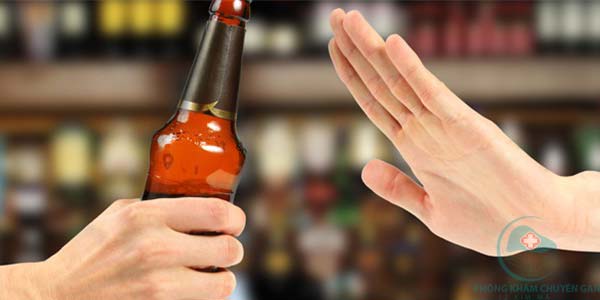Alcohol intoxication can have a number of effects on a person, especially on the brain. Alcohol intoxication occurs infrequently in social drinkers, more frequently in heavy drinkers, and most frequently in problem drinkers and alcoholics. The pattern of aberrant responsiveness is a function of the blood alcohol level (BAL) and of pre-existing tolerance. Alcoholics have a high level of behavioral and physiologic tolerance to ethanol so that they may require blood alcohol levels almost 100 mg per deciliter higher than social drinkers lo show comparable impairment. Some alcoholics function adequately with a BAL of 250 mg per deciliter, a concentration at which social drinkers become stuporous.
Acute alcohol intoxication occurs in two stages. In non-tolerant individuals, a BAL of about 100 to 200 mg per deciliter will result in dis-inhibition and hyper-excitability; with a BAL of above 250 mg per deciliter stupor and coma usually ensue. Although these two syndromes are part of a continuum, there is a sufficient change in symptoms at about the level of 200 to 250 mg per deciliter (depending on the tolerance of a given individual) to warrant their separate deception.
Symptoms of alcohol intoxication:
The Alcohol Intoxication often arises with specific physical symptoms to be observed. It is not necessary to present all the symptoms to be with intoxication, but you should pay attention to:
- Pale or bluish skin;
- Fainting spells;
- Irregular breathing, identified if breathing takes more than ten seconds;
- Convulsions;
- Slow breathing, defined by less than eight inspirations and exhalations per minute;
- Vomiting ;
- Hypothermia or low body temperature.
What Is Alcohol Intoxication;What Are The Levels of Alcohol Intoxication
EXCITATION STAGE.
The social use of alcoholic beverages (as at a party) usually produces a BAL of about 50 mg per deciliter, a sense of relaxation and of well-being. At levels of 75 mg per deciliter, most individuals tend to feel more relaxed and sociable; a few become garrulous or hostile. At about 100 mg per deciliter, signs of ataxia begin. Coordination and judgment may be impaired at the same time that confidence in one’s ability increases. At this level, driving may be hazardous; this is reflected in most state laws which define “driving while intoxicated” (DWI) at a BAL of 100 mg per deciliter or higher.
At BALs of about 125 to 150 mg per deciliter, behavioral changes occur which, in general, reflect the underlying personality. Some individuals continue to become more congenial, sociable, and dis-inhibited; some become hostile and aggressive; and some turn inward and become silent and depressed. Increasing BALs usually continue to be associated with increasing personality-specific responsiveness until the more narcotic effects of ethanol begin to manifest themselves at or about the 200 to 250 mg per deciliter level.
In susceptible persons alcohol may precipitate great agitation and acts of violence. To treat this condition one should give intramuscular benzodiazepines in cautiously increasing doses in order to avoid cumulative narcosis with the alcohol (see below). Individuals who show marked depressive reactions while under the influence of alcohol should be given verbal support until the effects wear off. Elevated BALs are found in about 25 per cent of successful suicides.
DEPRESSANT STAGE.
When the BAL nses higher than about 200 to 250 mg per deciliter in nontolerant individuals, and to more than about 300 to 350 mg per deciliter in problem dnnkers, the individual passes into a depressant syndrome. This condition requires immediate medical care. BALs must be taken and evaluated; a single BAL of 300 mg per deciliter should not be interpreted as contravening treatment, since a reservoir of unabsorbed alcohol may be present in the stomach and small intestine Gastric gavage and lavage should be undertaken both to reduce this reservoir and to prevent vomiting and pulmonary aspiration. V ital systems must be maintained, with the administration of oxygen, intravenous fluids, and. rarely, ventilatory and circulatory support. Antidotes are ineffective.
HANGOVERS Ethanol is strongly toxic to both brain and stomach, and its alcohol and aldehyde congeners are even more so, explaining the high incidence of post-intoxication malaise, headache, giddiness, tremor, and nausea. These symptoms are generally self-limited and respond readily to antacids and aspirin. More serous symptoms occur in more persistent but not yet fully alcoholic drinkers, in whom the so-called “hangover” may actually be an early withdrawal syndrome.
Treatments for Alcohol Poisoning:
Treatment from Alcohol Poisoning usually involves supportive care while your body gets rid of alcohol. This typically includes:
- Oxygen therapy;
- Prevention of breathing or suffocation problems;
- The use of vitamins and glucose to help prevent serious complications of alcohol intoxication ;
- Fluids given through a vein (intravenous) to prevent dehydration;
- Careful monitoring.
